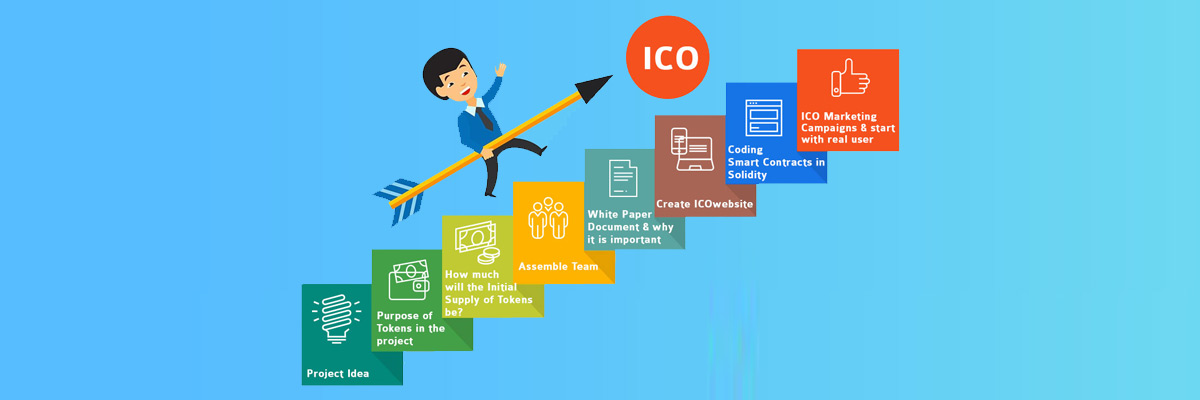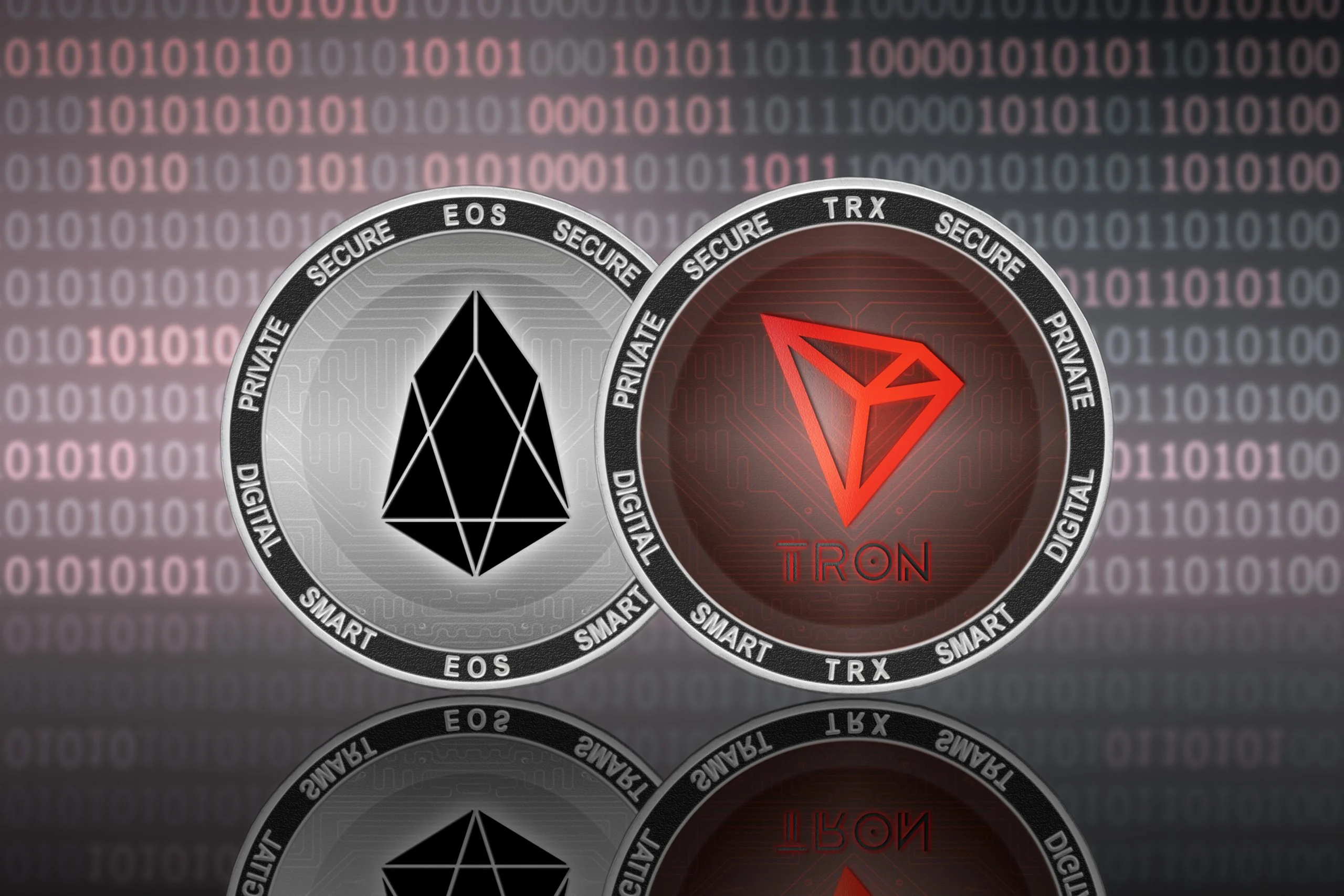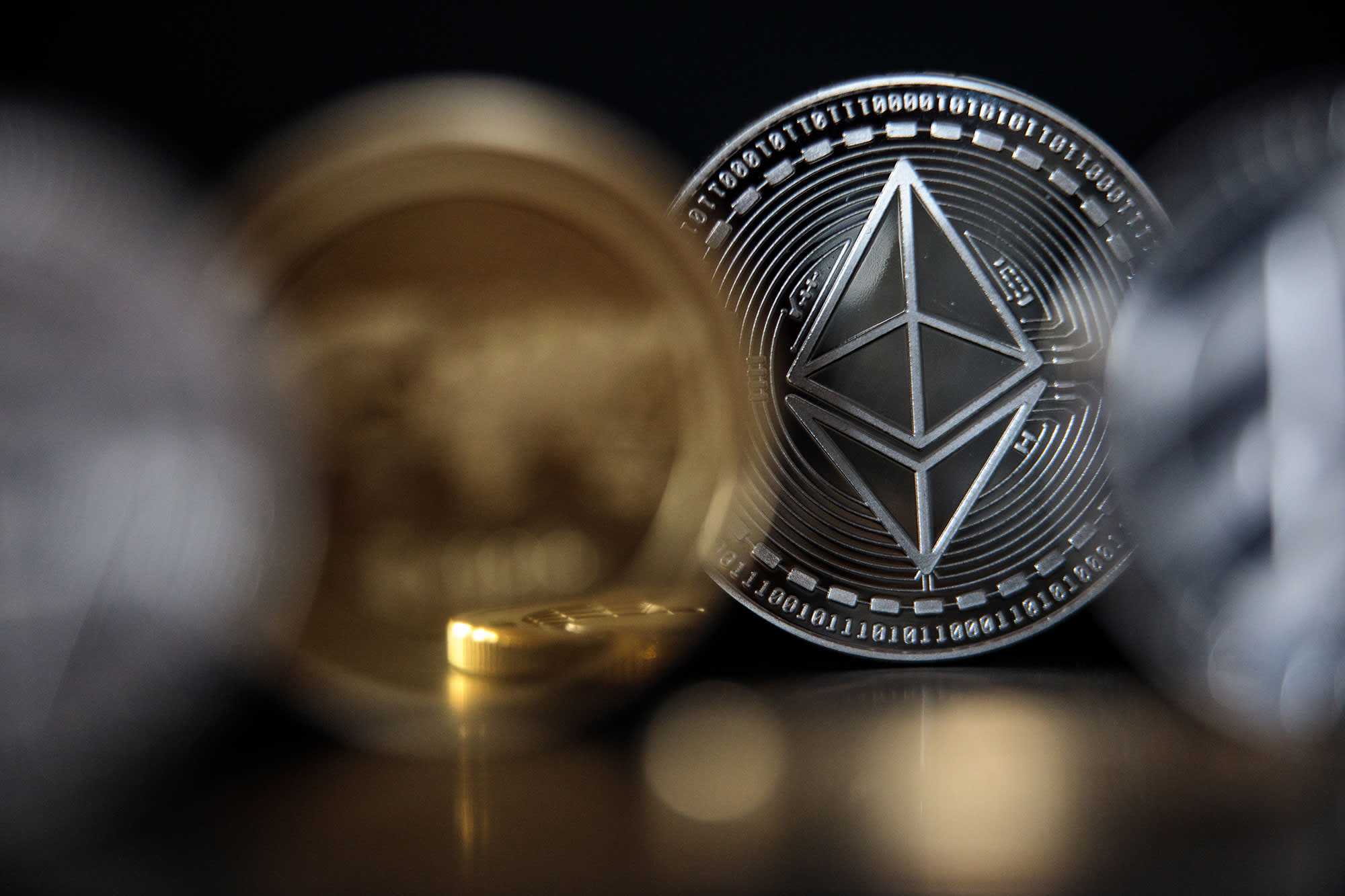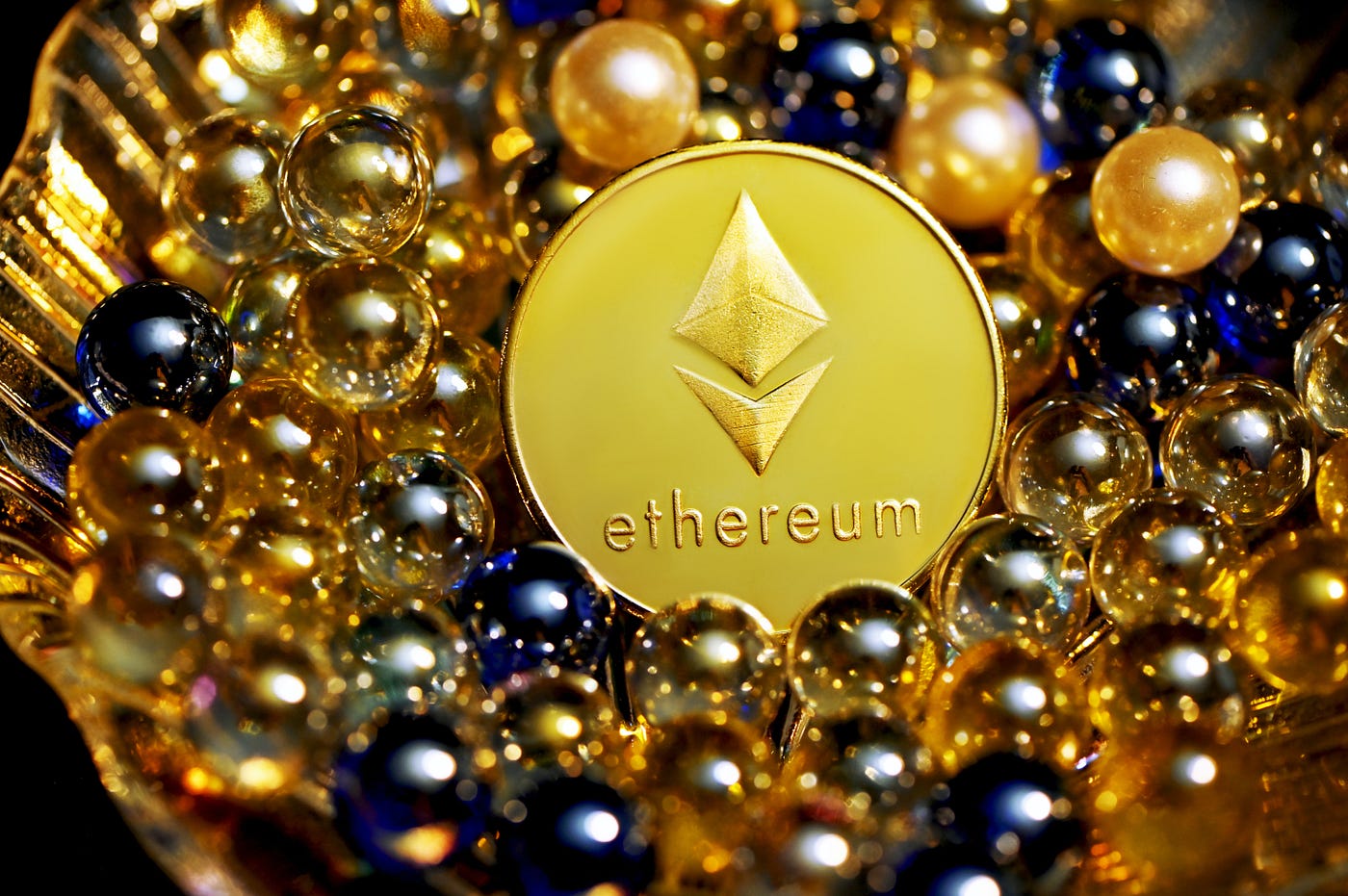Introduction
In today’s digital age, Initial Coin Offerings (ICO) have emerged as a popular method for startups and businesses to raise capital. At the heart of an ICO is the ICO smart contract, a self-executing contract with predefined rules and conditions that govern the distribution and management of tokens.
ICO smart contracts have revolutionized the way fundraising is conducted, offering transparency, speed, and security to both project creators and investors. By leveraging blockchain technology, ICO smart contracts eliminate the need for intermediaries and enable the seamless transfer of digital assets.
This article will serve as a comprehensive guide for anyone looking to build ICO smart contracts. We will discuss the benefits of using ICO smart contracts, provide a step-by-step guide on how to build them, and offer some helpful tips and best practices.
Whether you are a blockchain developer, an entrepreneur planning an ICO, or an investor interested in understanding the workings of ICO smart contracts, this article will equip you with the necessary knowledge to navigate the world of ICOs.
So, let’s dive in and explore the fascinating world of ICO smart contracts!
What is an ICO Smart Contract?
An ICO smart contract is a key component of the Initial Coin Offering process. It is a software protocol that automates the issuance, distribution, and management of tokens during an ICO. These contracts are built on blockchain platforms like Ethereum and utilize the underlying technology to enable secure and transparent transactions.
At its core, an ICO smart contract is a set of programmable rules and conditions that govern the behavior of a token sale. It acts as an intermediary between the project creators and the investors, ensuring that the token sale process is fair, efficient, and immutable.
ICO smart contracts are typically written in Solidity, a programming language specifically designed for creating smart contracts on the Ethereum blockchain. They leverage the power of blockchain technology to create a decentralized and trustless environment, eliminating the need for intermediaries such as banks or lawyers.
One of the main features of an ICO smart contract is its ability to create and distribute tokens automatically. These tokens represent a specific value or utility within the project ecosystem. The smart contract defines the token’s parameters, such as its total supply, token price, and any additional functionality or restrictions.
Furthermore, ICO smart contracts allow for the collection and management of funds raised during the token sale. They provide a mechanism for investors to send their contributions to a specified wallet address and receive tokens in return. The smart contract establishes rules for the allocation and distribution of tokens based on the investment amounts and token sale timeline.
By utilizing ICO smart contracts, projects can ensure transparency and accountability throughout the fundraising process. Investors can trust that the token distribution is predetermined and cannot be altered or tampered with. Additionally, the use of blockchain technology provides an immutable record of all transactions, making it easy to audit the token sale at any time.
Overall, ICO smart contracts are a fundamental tool for facilitating the token sale process in a secure, efficient, and transparent manner. They have revolutionized the way startups raise funds and transformed the investment landscape by democratizing access to investment opportunities.
Benefits of Using ICO Smart Contracts
ICO smart contracts offer numerous benefits for both project creators and investors participating in token sales. Let’s explore some of the key advantages:
- Transparency: ICO smart contracts provide transparency by making the entire token sale process publicly visible on the blockchain. Investors can verify the smart contract code and track the flow of funds, ensuring that the project creators are following the rules defined in the contract.
- Security: By leveraging blockchain technology, ICO smart contracts offer a high level of security. Once deployed on the blockchain, the contract becomes immutable and resistant to hacking or tampering. This eliminates the risk of fraud or unauthorized access to funds.
- Efficiency: ICO smart contracts automate the token sale process, reducing the need for manual intervention. They handle the distribution of tokens and collection of funds in a seamless and efficient manner, minimizing human error and saving time and resources.
- Elimination of Intermediaries: ICO smart contracts remove the need for intermediaries such as banks, lawyers, or crowdfunding platforms. This reduces costs and eliminates potential delays or bottlenecks in the fundraising process. Investors can directly interact with the smart contract, ensuring a direct and transparent relationship with the project.
- Global Accessibility: ICO smart contracts enable participation in token sales from anywhere in the world. Blockchain technology operates on a decentralized network, eliminating geographical boundaries and opening up investment opportunities to a global audience.
- Programmable Functionality: Smart contracts can have additional functionality built into them. They can include features like vesting periods for tokens, automatic token distribution based on certain conditions, or even the ability to integrate with other decentralized applications (dApps). This flexibility allows project creators to tailor the token sale experience to their specific needs.
- Investor Protection: ICO smart contracts provide a level of protection to investors by defining the rules and conditions of the token sale. Investors can verify the terms outlined in the smart contract before deciding to participate, ensuring fairness and transparency in the fundraising process.
Overall, ICO smart contracts revolutionize the traditional fundraising model by leveraging blockchain technology to offer transparency, security, efficiency, and a global reach. These benefits have contributed to the widespread adoption of ICO smart contracts as a preferred method for raising funds and investing in innovative projects.
Step-by-Step Guide to Building ICO Smart Contracts
Building ICO smart contracts requires careful planning, analysis, and implementation. Here is a step-by-step guide to help you navigate the process:
- Define the Token Parameters: Start by defining the parameters of your token, such as its name, symbol, total supply, and decimal places. Determine if your token needs any additional functionality, like the ability to transfer ownership or lock token transfers for a specific period.
- Set Up the Crowdsale Contract: Create a smart contract specifically for the token sale. Define the start and end dates of the sale, the price of the token, and any bonus structures or tiers. Implement logic to calculate and distribute the corresponding number of tokens based on the invested amount.
- Implement Token Distribution: Determine how the tokens will be distributed to investors. You can choose to distribute tokens immediately after the investment, or you can set up vesting schedules to release tokens gradually over a specified time period.
- Secure the Smart Contract: Ensure the security of your smart contract by conducting a thorough audit and implementing best practices. Consider using external security tools and mechanisms to protect against potential vulnerabilities or attacks.
- Test and Deploy the Smart Contract: Before deploying your smart contract to the mainnet, conduct rigorous testing on a testnet to identify and fix any potential bugs or issues. Once you are confident in the functionality and security of the contract, deploy it to the desired blockchain network.
It is important to note that building ICO smart contracts requires proficiency in programming languages like Solidity and an understanding of blockchain development. If you lack the necessary skills or experience, consider collaborating with a blockchain developer or engaging a development team to assist you in the process.
Throughout the development process, it is crucial to document all the steps, decisions, and changes made to the smart contract code. This documentation will serve as a valuable resource for audit purposes and future reference.
By following this step-by-step guide, you will be well on your way to building a robust and secure ICO smart contract that meets the needs of your project and provides a reliable framework for conducting a successful token sale.
Define the Token Parameters
Defining the token parameters is the first step in building an ICO smart contract. The token parameters determine the key characteristics of the token, such as its name, symbol, total supply, and decimal places. Here are the key elements to consider when defining the token parameters:
- Name: Choose a unique and descriptive name for your token. The name should reflect the purpose or concept behind the token.
- Symbol: Select a short and recognizable symbol or ticker for your token. The symbol is commonly used to represent the token on exchanges and trading platforms.
- Total Supply: Determine the total number of tokens that will be created. This is the maximum number of tokens that will ever exist for your project.
- Decimal Places: Decide on the number of decimal places for your token. This determines the divisibility of the token and allows for greater flexibility in defining token values.
Additionally, you may want to consider implementing other features or functionality in your token, such as:
- Transfer Ownership: Determine whether the token should have the ability to transfer ownership. This may be useful if the token represents ownership in a physical or digital asset.
- Lock Transfers: Consider whether you want to implement a lock-up period, during which token transfers are prohibited. This can help prevent early investors from selling tokens immediately, ensuring stability and fairness in the market.
- Voting Rights: If your token includes voting rights for holders, define the mechanism and rules for voting on important project decisions.
It is important to carefully consider these parameters as they will be integral to the functioning and value of your token. Make sure to conform to any regulatory requirements or guidelines applicable to your project and the jurisdiction in which you operate.
Once you have defined the token parameters, you can proceed to the next steps in building your ICO smart contract, such as setting up the crowdsale contract, implementing token distribution, securing the contract, and conducting thorough testing. Each step builds on the previous one, ensuring a robust and reliable smart contract that facilitates a successful token sale.
Set Up the Crowdsale Contract
Once you have defined the token parameters, the next step in building an ICO smart contract is setting up the crowdsale contract. This contract governs the process of selling tokens to investors during the token sale. Here are the key aspects to consider when setting up the crowdsale contract:
- Sale Duration: Determine the start and end dates of the token sale. This establishes the duration during which investors can participate in the sale.
- Token Price: Specify the price of the token in either the native cryptocurrency of the blockchain platform or in a fiat currency. The token price can be fixed or subject to variations based on market conditions or bonus structures.
- Bonus Structures: Consider implementing bonus structures to incentivize early investors or larger contributions. These bonus structures can be based on time intervals, investment tiers, or other criteria.
- Payment Methods: Decide which payment methods will be accepted for the token sale. Common methods include cryptocurrencies or fiat currencies, but you can also consider accepting specific tokens or utilizing decentralized finance (DeFi) protocols.
- Token Purchase Limit: Set limits on the maximum and minimum amounts that investors can contribute during the token sale. This helps ensure fairness and prevents a small number of investors from acquiring a disproportionate amount of tokens.
- Wallet Address: Specify the wallet address to which investors should send their contributions. Ensure that the wallet address is secure and accessible only to authorized individuals.
Implementing the crowdsale contract requires programming skills, particularly in languages like Solidity. It is important to follow best practices and security measures during the development process to protect against vulnerabilities or attacks.
Consider conducting simulations or running test scenarios to ensure the contract functions as intended. This can help identify any discrepancies or errors in the contract’s logic before launching the token sale.
By setting up the crowdsale contract, you establish the framework for investors to participate in your token sale. This contract defines the rules, pricing, and conditions for acquiring the tokens and plays a crucial role in ensuring a fair and transparent token sale process.
Once the crowdsale contract is set up, you can proceed to the next steps of building the ICO smart contract, such as implementing token distribution, securing the contract, and conducting thorough testing. Each step brings you closer to a successful token sale and the realization of your project’s goals.
Implement Token Distribution
Implementing token distribution is a critical step in building an ICO smart contract. This step determines how tokens will be allocated and distributed to investors who participate in the token sale. Here are the key considerations when implementing token distribution:
- Token Allocation: Determine the proportion of tokens that will be reserved for the token sale. This can include a specific percentage of the total token supply or a fixed number of tokens.
- Investment Allocation: Define how the number of tokens will be determined based on the contribution amount from investors. This can be calculated based on the token price set in the crowdsale contract.
- Investor Verification: Consider implementing verification mechanisms to ensure that the investors who contribute during the token sale are eligible to receive tokens. Verification processes can include Know Your Customer (KYC) procedures or whitelisting of addresses.
- Vesting: Decide if you want to incorporate vesting schedules for the tokens. Vesting periods restrict the immediate transfer of tokens to investors, ensuring a reasonable lock-up period and avoiding token dumping.
- Token Supply Management: Implement mechanisms to manage the token supply during and after the token sale. This includes reducing or increasing the token supply based on the success of the sale or future needs of the project.
- Reserve Tokens: Reserve a portion of the token supply for future use, such as partnerships, team incentives, or expansion. These tokens should be managed carefully to maintain transparency and prevent misuse.
When implementing the token distribution, it is crucial to consider the regulations and legal requirements governing your project and the jurisdictions in which you operate. Ensure compliance with relevant securities laws and any restrictions on the distribution or transfer of tokens.
To enhance transparency, consider publishing the token distribution details on a public blockchain explorer. This allows stakeholders to verify the token allocations and track the movement of tokens during and after the token sale.
By implementing token distribution effectively, you ensure a fair and equitable distribution of tokens to investors, fostering trust and confidence in your project. This step brings you closer to completing the development of your ICO smart contract and sets the stage for a successful token sale.
Once token distribution is implemented, proceed to the remaining steps in building the ICO smart contract, such as securing the contract, testing its functionality, and deploying it to the desired blockchain network.
Secure the Smart Contract
Securing the smart contract is a crucial step in building an ICO smart contract. As smart contracts handle financial transactions and token distribution, ensuring the security of the contract is paramount. Here are some key steps to take when securing your smart contract:
- Code Audit: Conduct a comprehensive code audit to identify and fix any potential vulnerabilities or weaknesses in the smart contract code. This can be done manually or by utilizing security tools and services specifically designed for smart contract audits.
- Secure Coding Practices: Follow secure coding practices to minimize the risk of vulnerabilities. This includes using safe libraries and avoiding common pitfalls such as unchecked user inputs, reentrancy attacks, and integer overflow or underflow.
- External Dependency Protection: Be cautious when interacting with external contracts or dependencies. Verify the reliability and security of these contracts and use mechanisms like contract whitelisting to prevent unauthorized access.
- Access Control: Implement access control mechanisms to ensure that only authorized individuals or smart contracts can modify critical functions or variables in the smart contract. This prevents unauthorized tampering with the contract’s behavior.
- Handling Funds Securely: Take precautions to handle funds securely within the contract. Use secure wallet addresses and implement measures like multi-signature wallets or withdrawal limits to reduce the risk of funds being misused or stolen.
- Emergency Circuit Breaker: Consider implementing an emergency circuit breaker or pause mechanism in the smart contract. This allows you to halt or modify the contract’s behavior in case of unforeseen issues or vulnerabilities.
Regularly monitor community feedback and participate in bug bounty programs, where security experts can identify vulnerabilities in your smart contract code. Address any reported issues promptly and release updates or patches to enhance the contract’s security.
It is important to note that no smart contract is completely immune to attacks. By following best practices and continuously improving your contract’s security, you can minimize potential risks and ensure a safer environment for your project and its participants.
Once you have secured your smart contract, proceed to the remaining steps in building the ICO smart contract, such as testing its functionality, deploying it to the desired blockchain network, and preparing for the token sale.
Test and Deploy the Smart Contract
Testing and deploying the smart contract is a critical step in the process of building an ICO smart contract. Thorough testing helps ensure the functionality, security, and reliability of the contract before launching it to the desired blockchain network. Follow these steps to test and deploy your smart contract:
- Test on a Testnet: Before deploying the contract on the mainnet, conduct extensive testing on a testnet. This allows you to simulate real-world scenarios and identify any potential issues or bugs in the contract’s functionality.
- Unit Testing: Implement unit tests to verify the individual functions and behaviors of the smart contract. Use a testing framework like Truffle or Remix to automate the testing process and ensure consistent results.
- Integration Testing: Test the interactions and dependencies of your smart contract with other contracts or external systems. This ensures that the contract operates as intended and maintains proper integration with the blockchain network.
- Security Audits: Engage security experts or external auditors to conduct thorough security audits of your smart contract code. This helps identify potential vulnerabilities or weaknesses that could be exploited by attackers.
- Deploying to the Mainnet: Once you are confident in the functionality and security of your smart contract, deploy it to the mainnet. Choose the appropriate blockchain network for your specific project, typically Ethereum or another compatible blockchain platform.
- Transaction and Gas Fee Considerations: Take into account the transaction fees and gas costs associated with deploying and interacting with your smart contract on the mainnet. Properly estimate gas limits and costs to ensure smooth operations and prevent unforeseen expenses.
- Documentation: Document the deployment process and record any relevant information such as the contract address, deployment date, and transaction hashes. This documentation serves as a reference for future maintenance and auditing purposes.
Once the smart contract is successfully deployed on the mainnet, conduct additional testing to validate its behavior and functionality in a live environment. Monitor the contract closely during the initial stages to identify and resolve any unforeseen issues.
Finally, communicate the deployment of your smart contract to the community and any potential investors. Provide clear instructions on how to interact with the contract and participate in the token sale, ensuring a seamless and successful fundraising process.
By thoroughly testing and deploying your smart contract, you establish a solid foundation for your ICO project and ensure the integrity of the token sale process.
Tips and Best Practices
Building and deploying an ICO smart contract requires careful consideration and adherence to best practices. Here are some tips to help you navigate the process successfully:
- Research and Due Diligence: Conduct thorough research and due diligence on the blockchain platform you choose, the smart contract development process, and the regulatory requirements specific to your project. Stay updated with industry trends and best practices.
- Engage with Experts: Collaborate with experienced blockchain developers, auditors, and legal professionals who specialize in smart contract development and ICOs. Their expertise can help you navigate complex technical and legal aspects.
- Follow Secure Coding Practices: Adhere to secure coding practices to minimize the risk of vulnerabilities and ensure the security of your smart contract. Regularly update your code and keep up with the latest security measures and patches.
- Document Every Step: Maintain proper documentation throughout the development process. Document design decisions, code changes, audit reports, and any other relevant information. This documentation serves as a valuable resource for future maintenance, auditing, and reference purposes.
- Regularly Update and Improve: Blockchain technology is evolving rapidly, and security threats are constantly evolving. Stay proactive and regularly update and improve your smart contract code to protect against emerging vulnerabilities.
- Improve Code Efficiency: Optimize your smart contract code for gas efficiency to reduce transaction costs. Minimize unnecessary computations, optimize data storage, and use coding patterns that promote gas savings.
- Communicate Clearly: Clearly communicate the details and terms of your token sale to potential investors. Provide comprehensive documentation, an easy-to-understand whitepaper, and clear instructions on how to participate and interact with the smart contract.
- Test Thoroughly: Conduct rigorous testing on both testnet and mainnet environments. Test all possible scenarios, edge cases, and integration points. Consider conducting third-party security audits to discover vulnerabilities and improve the overall security of your smart contract.
- Stay Compliant: Understand and adhere to the legal and regulatory requirements in the jurisdictions where you operate. Implement necessary measures, such as KYC procedures, to ensure compliance with anti-money laundering (AML) and know your customer (KYC) regulations.
- Engage the Community: Engage with the blockchain community and potential investors. Provide updates, address concerns, and foster a transparent and open communication channel. Building a strong community around your project can enhance trust and attract more participants.
By following these tips and best practices, you can increase the chances of building a robust and secure ICO smart contract, ensuring a successful token sale and setting the stage for the growth and success of your project.
Conclusion
Building an ICO smart contract is a complex and crucial process for launching a successful token sale. ICO smart contracts have transformed the fundraising landscape, offering transparency, efficiency, and security through the use of blockchain technology.
In this comprehensive guide, we have explored the key steps involved in building an ICO smart contract. From defining the token parameters to testing and deploying the smart contract, each step contributes to the overall success of your token sale.
We discussed the importance of defining the token parameters, setting up the crowdsale contract, implementing token distribution, securing the smart contract, and thoroughly testing and deploying the contract. Following best practices and maintaining security throughout the process is critical to protect your project and the interests of your investors.
Remember to conduct thorough research, engage with experts, follow secure coding practices, and document every step of the development process. Regular updates and improvements, along with clear communication and engagement with the community, contribute to the overall success of your ICO project.
Building an ICO smart contract requires technical skills, knowledge of blockchain technology, and compliance with legal and regulatory frameworks. If you lack the necessary expertise, consider collaborating with experienced professionals or development teams to ensure a smooth and secure process.
By applying the tips and best practices outlined in this guide, you can enhance the transparency, security, and integrity of your token sale, leading to a successful ICO and the realization of your project goals.
Good luck with your journey in building and launching your ICO smart contract!

























